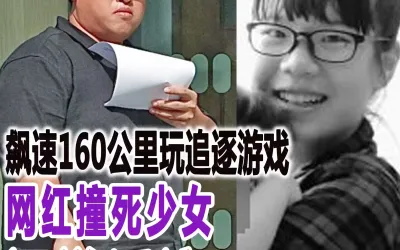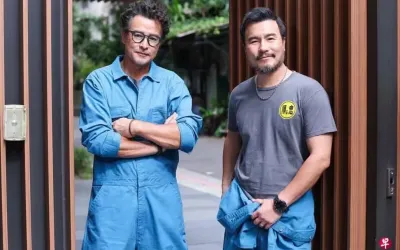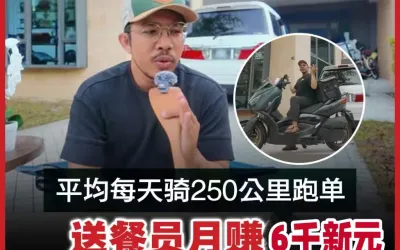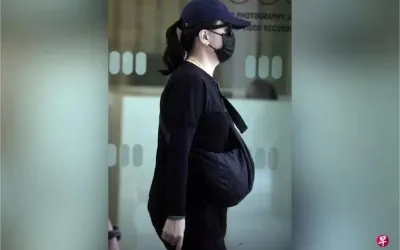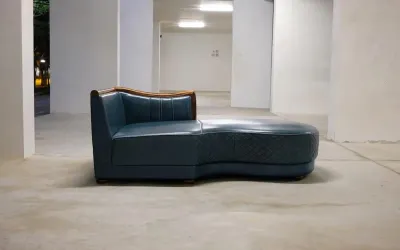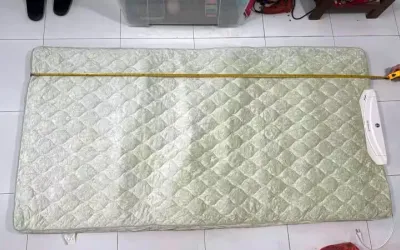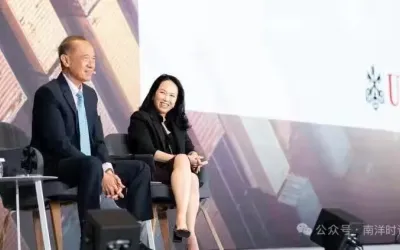2024年7月2日,新加坡國家社會及家庭發展部長兼衛生部第二部長馬善高在國會答覆惹蘭勿剎集選區議員文禮佳博士關於家庭援助站(Family Nexus)計劃的進展情況。
以下內容為新加坡眼根據國會英文資料翻譯整理:
議長先生:有請文禮佳博士
文禮佳博士 (惹蘭勿剎集選區議員):議長先生,感謝部長分享關於母子健康工作小組(CAMH)的信息。我相信這是一項了不起的舉措,是我們期待已久的。議長先生,我有一些補充問題。如果我超出兩個問題,可以嗎?
議長先生:請一次性提出所有問題,儘量簡明扼要。
文禮佳博士 (惹蘭勿剎集選區議員):可以。議長先生,我的第一個補充問題是關於家庭援助站(Family Nexus)的。目前已建立了家庭援助站(Family Nexus)點。請問社會與家庭發展部,如果要擴展到其他地區,會考慮到哪些因素?我相信還有其他地區也希望擁有這些服務。所以,這是第一個問題。
第二個問題是關於螢幕時間的使用。這是文件中非常強調的問題,但目前只有指導方針。社會與家庭服務部是否有計劃考慮將其納入立法,以限制兒童使用這些設備?
議長先生,我的第三個問題是關於兒童肥胖率的擔憂。雖然我們想單獨解決肥胖問題,但我記得當年當我們談論肥胖問題時,學校里有一群學生通常會被擱置一邊。在我們解決這個問題時,我想知道我們如何才能更好地管理這種情況,以免我們把這個群體隔離得太厲害,使兒童因為肥胖成為攻擊的目標。
馬善高(社會及家庭發展部長)先生:在設計4家家庭援助站(Family Nexus)時,我們曾考慮過幾種嘗試模式。一種模式就像我們淡濱尼天地(our Tampines Hub)的模式,這是一個社區點,社區居民自然地、定期地聚集在一起,形成一個大家都熟悉的地方,但這裡沒有醫療設施,不像綜合診所。我們還有另一個地方,它實際上是一個綜合診所,然後我們注入了社會服務,這樣,如果他們來就醫,就可以將他們轉診到社會服務機構。另一種情況是,綜合診所與社會服務機構一起在現場設立一個小單位,這是一種混合模式。
因此,我們仍在研究各種混合模式和各種配置,然後在兩年內進行評估,看看哪種模式最好、如何最好以及哪種模式最適合,從而確定我們能為母嬰二人組帶來的影響。但就目前而言,我們正在研究的是母嬰二人組的密度如何,這將是我們何時推出這項服務的優先事項,當試點得到驗證並選擇混合型、社區型或綜合診所型時,我們就會推出這項服務。
關於螢幕使用時間,目前只是一個指導方針。歸根結底,為服務提供商立法確實非常困難,因為這是一個複雜的問題,涉及通訊及新聞部 (MCI) 和衛生部(MOH)。在世界各地,我們都在努力解決這個問題,並尋找解決方案。
但是,我們可以把控制權交給我們的父母,讓他們了解自己的孩子,尤其是在孩子很小的時候,會接觸到哪些不同類型的螢幕時間。例如,新加坡健康成長追蹤研究(Growing Up in Singapore Towards Healthy Outcomes,簡稱GUSTO)就談到了電視時間。在孩子很小的時候,他們可能會看電視,完全被電視上的內容吸引和陶醉,我們會想,"哦,孩子正在欣賞節目呢"。
但新加坡健康成長追蹤研究(GUSTO)發現,這是在用燈光刺激大腦。孩子看到的只是光。他不明白自己在看什麼,對大腦的刺激對孩子沒有好處。它實際上對大腦有害。
因此,當我們審視其他類型的螢幕使用時,我們必須了解它是否用於互動目的(這是推薦的,但仍必須針對不同年齡段進行監管);它是否是被動的,即孩子在觀看但沒有人互動;或者更糟糕的是,在背景中;沒有人觀看,但它在背景中。
因此,我們的父母必須了解所有這些螢幕設備的使用情況,尤其是社交媒體和數字渠道(如 YouTube 等)的能力,這樣我們才能意識到我們讓孩子接觸了什麼,他們的大腦是如何發育的,甚至他們的社交行為是如何形成的。因此,請閱讀這些指南。它們經過深思熟慮,易於使用。我們不需要法規來理解這些東西。我們不需要律師來理解它們。只要讀一讀,它們就非常容易使用。記住三點:需要互動;避免被動觀看;更糟糕的是,不要使用背景螢幕。
最後,關於肥胖問題,我同意,在解決兒童肥胖問題方面,我們仍有許多事情需要做,並將繼續做下去。但是,我們應該在上游做更多的努力。新加坡健康成長追蹤的研究(GUSTO)還表明,我們可以為孩子們做一些事情,以防止肥胖的發生。例如,咀嚼時間。只要讓孩子在成長過程中多咀嚼,不要什麼都吞下去,就會影響肥胖率。這些簡單的事情,家長都可以做到。我們不要總是試圖在孩子上小學和中學時解決他們的肥胖問題,實際上,在他們成長過程中,我們可以做一些事情來解決這些問題。
這就是為什麼家庭援助站(Family Nexus)、綜合診所、我們在母親生孩子時對她們採取的干預措施(哺乳除外)等等都是重要的想法、概念和發現,我們希望這些想法、概念和發現能夠幫助我們的孩子成長,並通過儘可能多地解決和幫助他們的成長,開發他們的潛力。

以下是英文質詢內容:
Mr Speaker: Dr Wan Rizal.
Dr Wan Rizal (Jalan Besar): Mr Speaker, I thank the Minister for sharing on CAMH. I believe that this is a wonderful initiative, something that we have been waiting for, for some time. I have a number of supplementary questions, Mr Speaker. Is it okay if I go beyond the two?
Mr Speaker: Please ask all of them at one go and try to keep it succinct.
Dr Wan Rizal: Will do. Sir, my first supplementary question will be on the Family Nexus. There are Family Nexus sites already established. What considerations would the Ministry take into account when wanting to expand to other regions? I believe there are other regions which would also like to have these services. So, that is the first question.
The second question is about the usage of screen time. This is something that came up very strongly in the paper and there are only guidelines. Are there plans for the Ministry to consider making it into legislation, where we can limit the usage of these devices for children?
Sir, the third question I have is regarding the concerning rates of childhood obesity. Although we want to address obesity on its own, I remember back then that when we talked about obesity, a group of students in schools usually are sidelined. As we address this issue, I was wondering how we could better manage this situation so that we do not segregate this community too much where the children themselves are being targeted for being obese.
Mr Masagos Zulkifli B M M: When we designed the four Family Nexus centres, we considered a few models to try out. One model is like the one in our Tampines Hub, a community point where the community comes together naturally, regularly and makes a place where everyone is familiar with, but there are no medical facilities available, not like a polyclinic. We have another where it is actually a polyclinic and then we infused social services, so that if they come for medical attention, they can be referred to the social service agency. Another one is where the polyclinic has a small unit onsite together with the social service agency, which is a hybrid.
So, we are still looking at the various hybrids and the various configurations and then evaluate within, say, two years to see what best, how best and what suits where, in terms of the impact that we can provide for our mother and child dyad. But for now, what we are looking at is what is the density of the mother-child dyad like and that will be our priority on when we will roll this out, when the pilot is proven and chosen in terms of whether it is a hybrid type, community type or polyclinic type.
On screen time, it is a guideline right now. At the end of the day, to legislate something for the service providers is going to be really difficult because it is a complex issue involving both the Ministry of Communications and Information (MCI) and MOH. And everywhere in the world, we are trying to address this issue and looking for solutions to them.
But we can put this control in the hands of our parents to understand the different kinds of screen time that they are exposing their children to, especially when they are very young. Growing Up in Singapore Towards Healthy Outcomes (GUSTO), for example, talked about television (TV) time. In the very early years, a child may be watching TV, totally captured and enamoured by what is happening on TV, and we think, "Oh, the child is enjoying the show."
But what GUSTO has found is that it is stimulating the brain with lights. All the child is looking at is light. He does not understand what he is watching, and the stimulation on the brain is not good for the child. It is actually detrimental to the brain.
Therefore, when we look at other kinds of screen use, we have to understand whether it is for interactive purposes, which is recommended, but still must be regulated for different age groups; whether it is passive, where the child is watching and nobody is interacting; or, even worse still, in the background; where nobody is watching but it is in the background.

